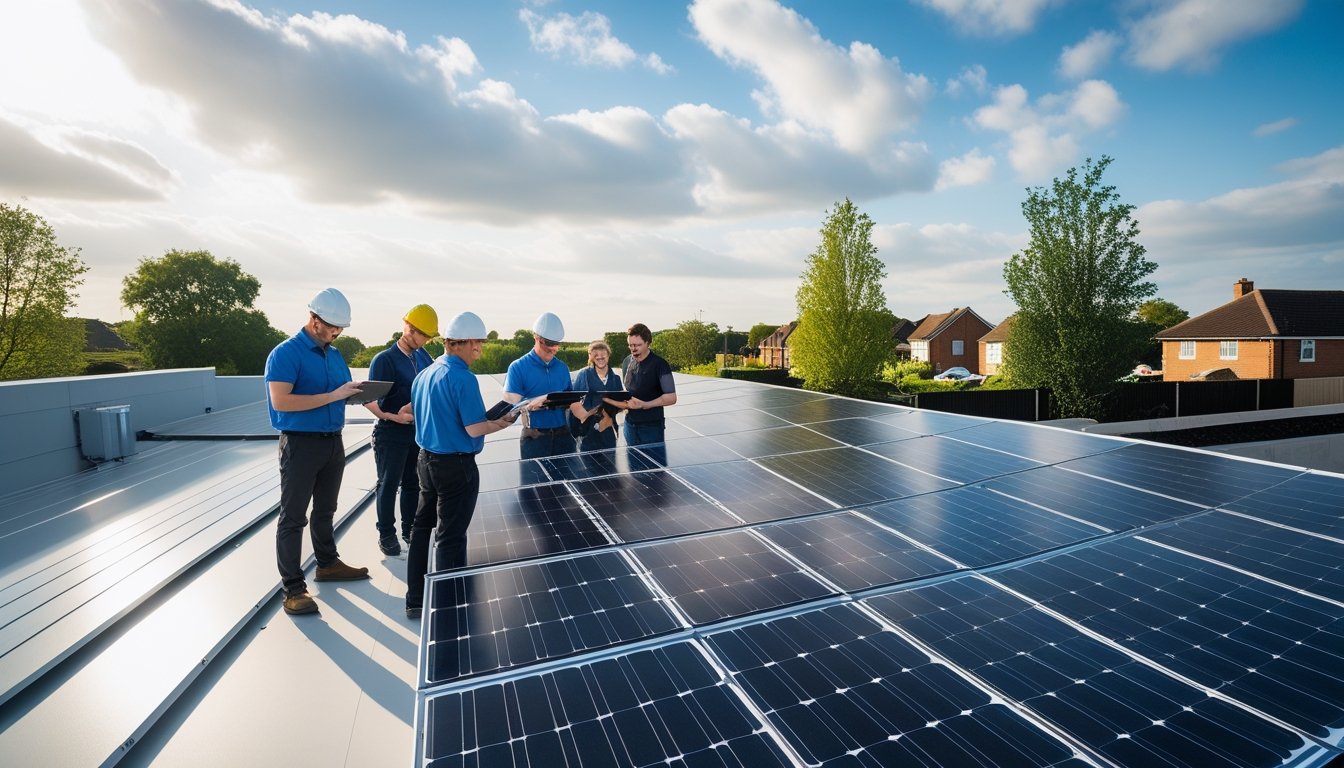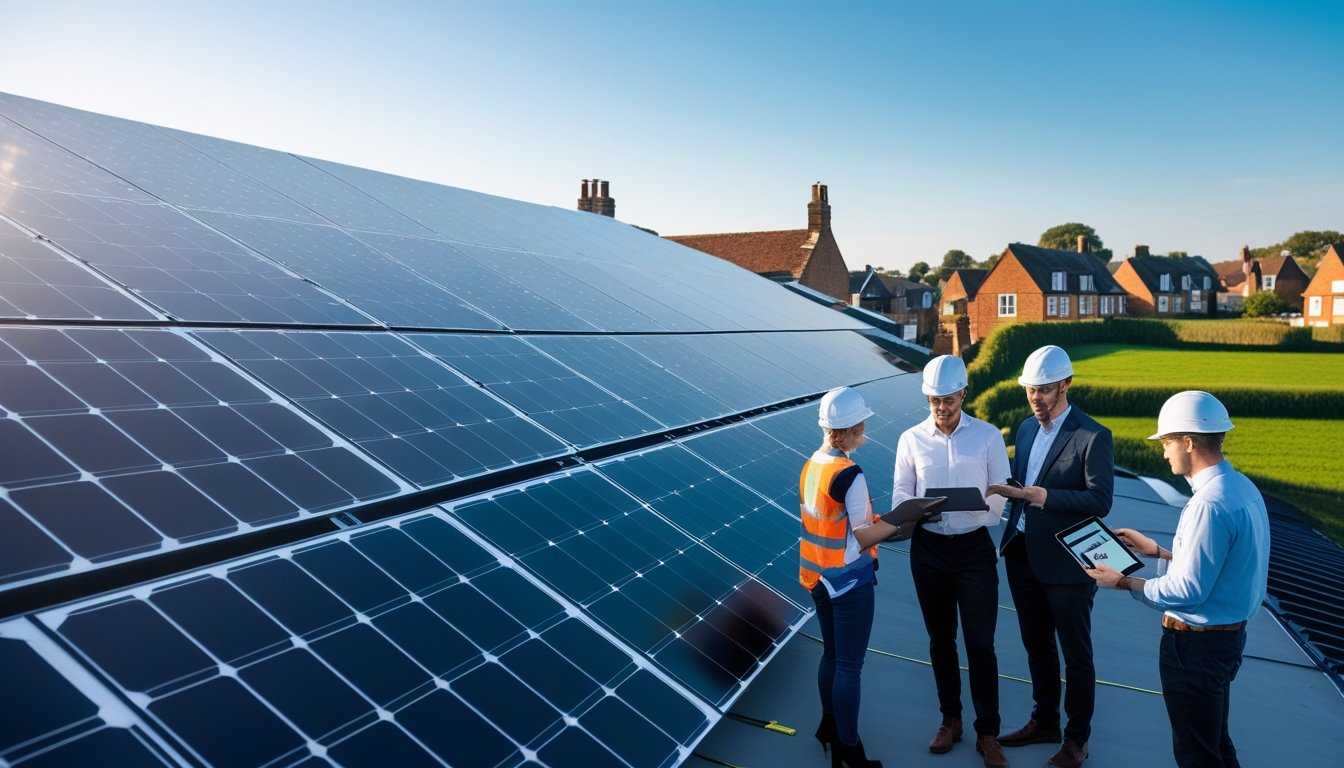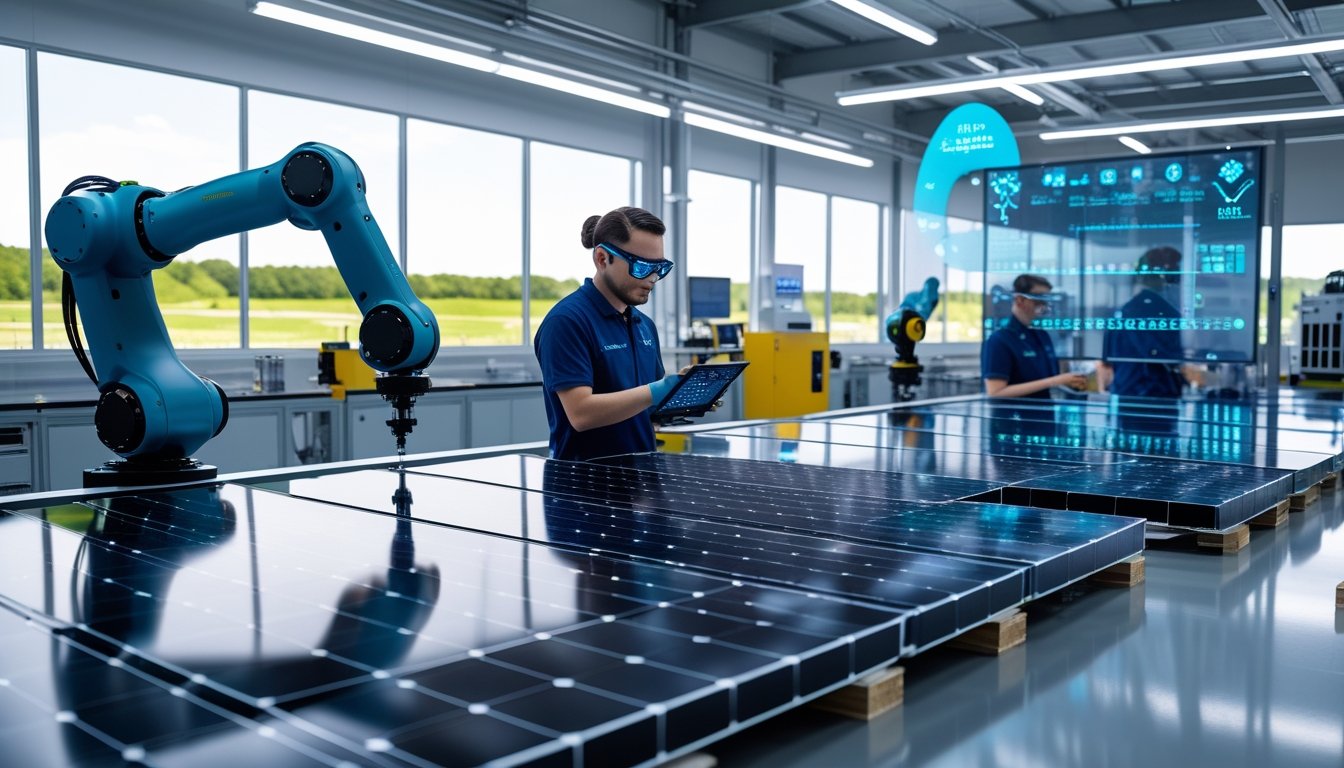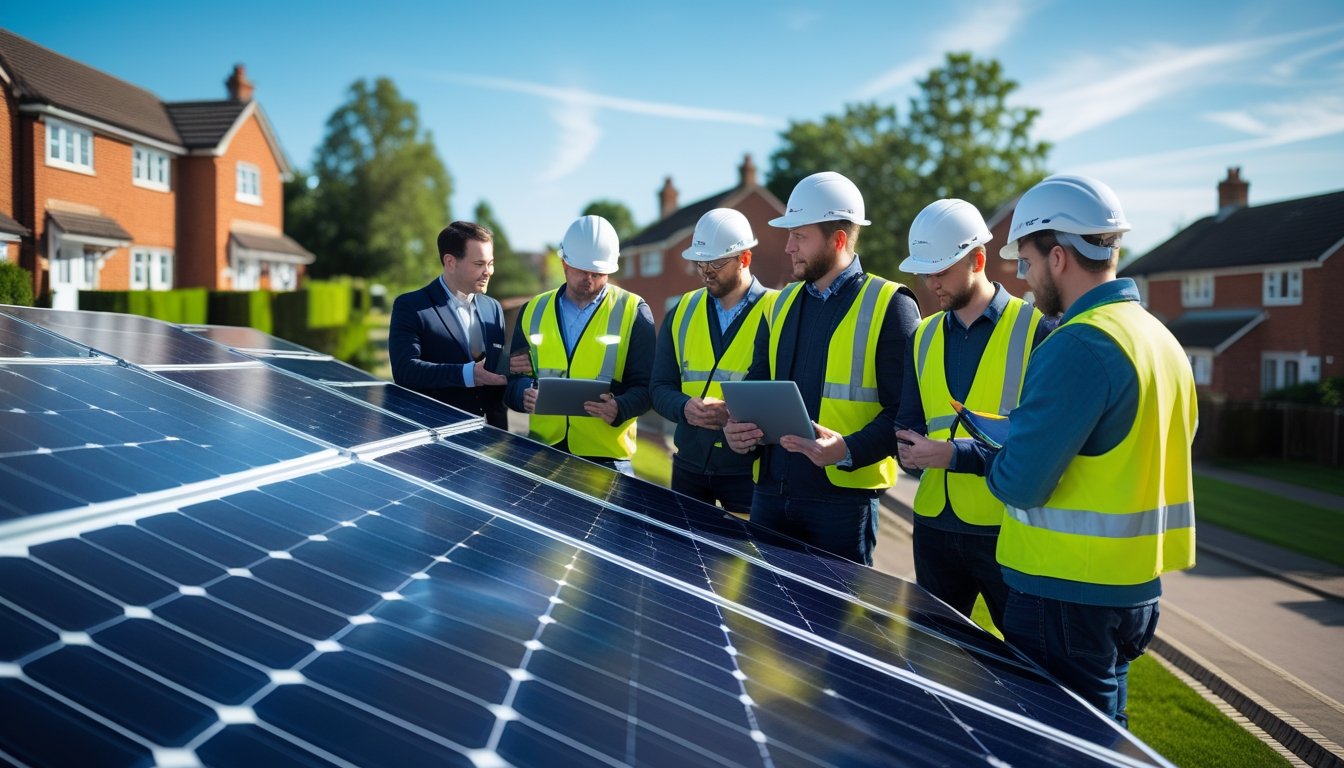Late updated: 07 Oct 2025 11:10
Written by: Eleanor Hartman
Exploring New Techniques In UK Solar Panel Design: Innovations and Trends
The landscape of solar technology is evolving rapidly in the UK, presenting new opportunities for homeowners and businesses alike. As we delve into the latest innovations, we find that exciting developments are being made in panel efficiency, material durability, and smart technology integration. Our exploration highlights how these advancements are not only boosting the performance of solar panels but also making them more adaptable to the UK's unique environmental conditions and aesthetic demands.

In recent years, solar panel designs have seen significant transformations, with a focus on sleek aesthetics and maximising energy output, even in challenging weather. Ingenious engineers and researchers are pioneering new techniques, making panels not only more efficient but also more appealing. This revolution in design could change the way we think about integrating solar energy into our daily lives.
Our journey into these new technologies showcases flexible solar cells and innovative materials that promise affordability without compromising on quality. The integration of smart manufacturing processes ensures these panels are at the cutting edge of energy production and sustainability. This article aims to unpack these technological miracles, which could redefine solar energy use in homes across the UK.
Key Takeaways
- New panel designs enhance energy output and aesthetics.
- Flexible solar cells promise affordability and efficiency.
- Smart technologies drive sustainability in solar energy.
Key Advances in UK Solar Panel Design

In the UK, solar panel design has seen remarkable developments focused on integrating new technologies, enhancing efficiency, and innovating semiconductor use. These advances are pivotal in increasing the adoption of solar energy across the region, offering environmentally friendly solutions without compromising on performance and design aesthetics.
Emerging Solar Panel Technologies
Recent innovations have introduced solar shingles and innovative solar windows that blend with building aesthetics while generating electricity. Manufacturers are exploring how solar panels can become integral to building structures without disrupting design.
The adoption of perovskite in combination with silicon represents another significant technological advancement. This pairing not only boosts absorption rates but also opens pathways for lighter and more versatile applications, potentially revolutionising the appearance and placement of solar panels in residential and commercial settings.
High-Efficiency Photovoltaic Cells
Photovoltaic cell efficiency remains a core focus, with current advancements striving to break past previous limitations. Using materials like perovskite combined with traditional silicon technologies, the efficiency has significantly surpassed earlier benchmarks.
Anti-reflective coatings on solar cells are reducing sunlight wastage, enhancing the amount of light captured. These efforts help photovoltaics deliver optimum performance, even in regions that don't receive abundant sunlight. Thanks to these state-of-the-art developments, we are better equipped to confront the challenges posed by lower sun exposure.
Innovation in Semiconductors
Solar panel efficiency deeply relies on innovative semiconductor technologies. The addition of perovskites to existing silicon semiconductors has proven instrumental in increasing energy conversion rates. This hybrid approach enhances cell performance, paving the way for future breakthroughs.
Manufacturers are keenly focused on semiconductor advancements that improve durability and resilience, especially under varying environmental conditions. New compounds and materials are being tested to ensure longevity and sustained panel output, making these improvements crucial to solar panel viability and appeal in the UK market.
Integrating Smart Manufacturing and Sustainability

Integrating smart manufacturing with sustainability in solar panel design offers distinct possibilities for improving efficiency and environmental impact. We explore the role of AI in production, current installation trends, and how design innovations are steering us towards a net zero future.
Leveraging AI in Solar Panel Production
AI technologies are transforming solar panel production by optimising manufacturing processes. Through machine learning algorithms, we can predict equipment failure, thereby enhancing maintenance schedules and reducing downtime. Automation equipped with AI also increases precision in production, minimising material wastage. Data analytics help manufacturers adjust to market demands promptly, allowing flexible adaptation in production volume and design specifications. By incorporating AI, we effectively cut costs and reduce carbon footprints, aligning with sustainability goals.
Trends in Solar Panel Installations
Across the UK, the trend in solar panel installations is focusing on efficiency and aesthetic integration. There's a marked shift towards residential and commercial spaces adopting systems that blend with architectural aesthetics without compromising performance. With innovations like bifacial panels capturing sunlight from both sides, efficiencies are on the rise. Smart home integration allows homeowners real-time energy monitoring, thus, enhancing energy use efficiency. This trend not only fosters increased adoption but also supports our commitment to a sustainable, lower-carbon economy.
Solar Design for a Net Zero and Sustainable Future
Innovative solar designs are pivotal to achieving a net zero future. Developers are using new materials and flexible panels that offer greater efficiency while harmonising with different structure designs. The move towards transparent panels finds its place in urban settings, doubling as windows. Smart manufacturing processes ensure these advancements align with sustainability, using fewer resources and generating less waste. Our vision for solar design prioritises eco-friendly solutions that pave the way for a sustainable future with minimal environmental impact.
By embracing these technologies and trends, we position ourselves at the forefront of the solar industry, driving towards a future where clean energy is seamlessly and sustainably integrated into our lives.
Frequently Asked Questions

In this section, we explore breakthroughs in photovoltaic materials, urban integration, efficiency, and adaptation of solar panels to the UK's weather conditions. We also consider government policy's role and sustainable practices in manufacturing.
What are the latest advancements in photovoltaic materials used in the UK?
Our research shows that perovskite solar cells are gaining attention for their potential to achieve high efficiency at low cost. These materials can be printed using standard techniques, offering scalability and affordability.
How is the UK integrating solar technology into urban environments?
Urban areas are seeing innovative solutions like building-integrated photovoltaics (BIPVs). These are incorporated into building materials such as windows and facades, allowing for energy generation without additional space requirements.
What are the leading efficiency innovations in UK solar panel technology?
We've found that bifacial panels, which capture sunlight from both sides, are being deployed to increase energy yield. Additionally, advancements in multilayer cell technology are setting new records for conversion efficiency.
How are UK solar panel designs adapting to variable British weather conditions?
Designs specific to diffused light environments are being prioritised. Thin-film technologies and optimised angles help capture more energy even on cloudy days, aligning solar panel output with the UK's varied weather patterns.
What role does government policy play in the development of solar panel technology in the UK?
Government incentives, including feed-in tariffs and grants, encourage growth in solar adoption. Policies emphasise research and development for renewable technologies, reinforcing the UK's commitment to reducing carbon emissions.
What sustainable manufacturing practices are being implemented in the production of UK solar panels?
Recycling programmes for solar panel components are being expanded. There's also a shift towards using environmentally friendly materials and processes to minimise the carbon footprint associated with manufacturing.